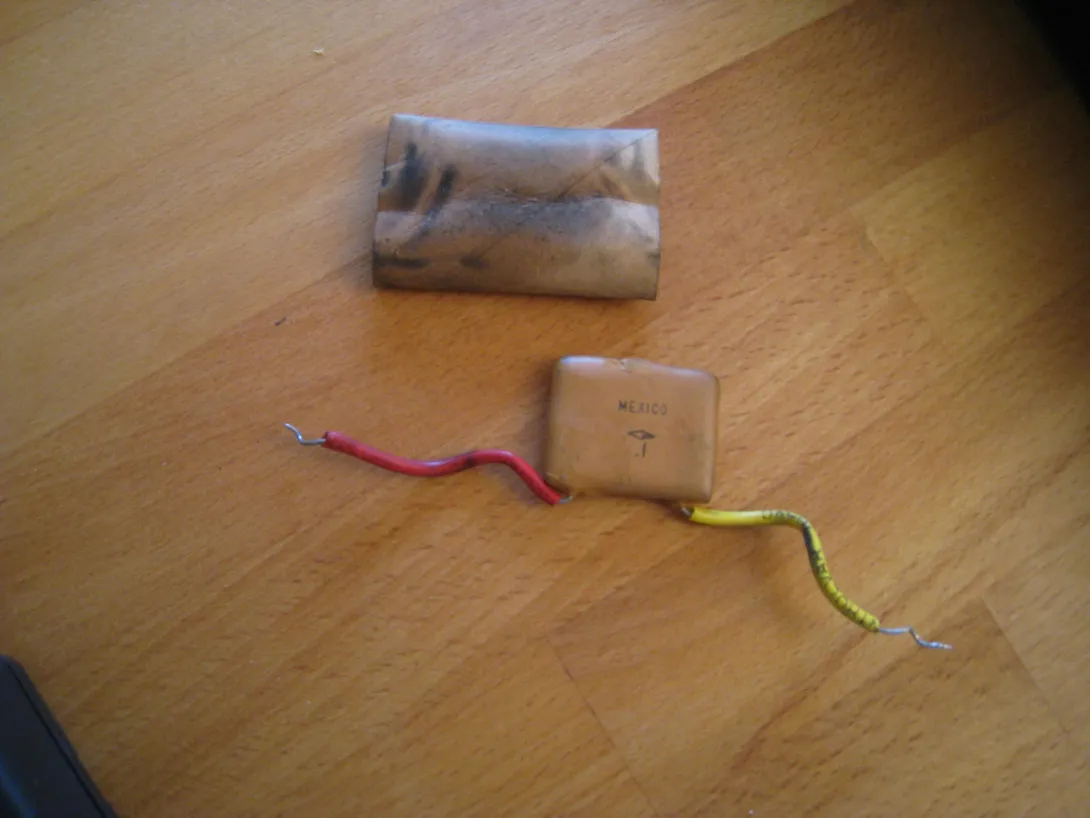
Hi,
let me introduce myself:
I'm from austria. My mother had a Kenwood Chef. It died some years ago. I tried to repair it and gave up. Came in contact with KitchenAid and wasn't sure for 2 years, wether Kenwood or KitchenAid is better for me. I've been watching some hours of comparison videos etc. on yotube and never was content with the sound/noise, the new Kenwoods and KitchenAid were making. In the end, i bought (in year 2015 or so) a Hobart KitchenAid 3C (build around 1954 - because the original recipes book came with it, "revised 1-54") on ebay in the US, a voltage converter 220 --> 110 and was good to go.
The device had still the factory colour, just one minor spot, where the white paint was missing. Even the pin, which is the pivot point for the head, had white colour on both sides. Paint obviously got a little more brittle over time, because my tapping/handling instantly caused the paint flaking off from the pin. So my conclusion is, that the last 30 years nobody has serviced this device.
The plastic feet were still quite soft, not brittle. On the other hand I saw some times in post or on youtube, that people who rebuild KitchenAids quite often buy new plastic feet because the old ones were stiff.
The original power cord is flexible. The conical cord connectors and the plastic coated cords (which most surely must have been produced around 1954 which means ~60 years old) were not brittle at all, instead, flexible like new! Nowadays they tell us "plastic becomes brittle over time, that's clear". So no progress, but regression over 60 years in what the chemical industrie sells to the consumer!
The machine ran totally smooth and quiet when it came to me. I wondered.
The grease was black, most of it not stiff, not broken up. Because here in Europe, grease for kitchen devices is always white, i thought that the grease got black because of use. So i thought, it's time to change the grease. I bought the expensive original KitchenAid Grease and then i saw, i has to be black :-) Nevertheless i changed the grease.
When i got to the planetary gears, i saw the wick, which easily teared. I guess, because of it's age. So my conclusion is, this machine was not much in use und has most likely never been opened. And if so, it must have been in the first years, and then has been storaged for some decades.
Result of my absolutely unnecessary maintenance which just made the paint worse: Same sound, same speed. I should have done nothing to it.
Then i got infected by the WACEM-Virus.
I went for a N50 with 220V in austria. When i came there, there stood a non-functioning Hobart K5A 220V Version. I didn't even know (and you don't find a word about it on the internet). I took it for 50 €, the N50 for 500 €. From the widow of Toni Kaiser, here in austria the famous inventor of the frozen "Germknödel" (i think frozen "yeast dumpling" is the correct translation; https://www.derstandard.at/story/1219938476125/toni-kaiser-verstorben). Derived from the birthyear of Toni Kaiser (1954) he probably bought this K5A between 1970 and 1978 (and lather on the N50 - it's the version were the attachment hub has an unexplainable enforcement and a pin on the left side) to make his yeast dumplings.
The K5A rotor must have had a burnt winding (the story of the K5A "repair" still hurts, maybe i'll tell later), but remarkable: The capacitor which inevitably is original, has still full capacity. I mesured it. But all the posts in electronic forums say: A capacitor won't work for more than 20 or 30 years and will loose capacity (because there are some volatile substances in it, which go into the air with time). Hm, obviously not so the capacitors of the 70s.And like in the 3C, the inside power cords are flexible. We all know, that nowadays after some years cords get stiff.
So my summary:
The capacitors, the grease and the plastics in 1955 were better, than what we consumers are getting after 70 - 80 years of progress in the chemical industry.
I admit, for the N50 regreasing i bought another H1 grease, but to be honest, i have the bad feeling, that i should have invested in some cans of the original black KitchenAid grease.
Greetings from austria!